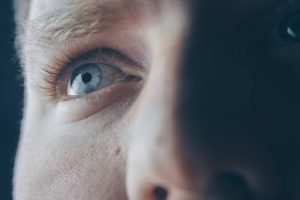Trends in Cosmetics for 2025: Redefining Beauty for the Modern Consumer
The beauty and cosmetics industry is continuously evolving, and 2025 is shaping up to be another year of exciting innovations and transformative trends. As consumer needs shift toward personalization, sustainability, and multifunctionality, brands are stepping up their game to deliver products that meet these demands while embracing cutting-edge technology. Here’s a look at the biggest trends making waves in cosmetics this year.
1. Skinimalism Takes Center Stage
Gone are the days of heavy makeup looks. In 2025, “skinimalism” continues to dominate, with consumers opting for lightweight, breathable products that enhance their natural beauty. This trend highlights the importance of hybrid products that combine skincare benefits with makeup, such as tinted moisturizers with SPF, serums with pigment, and foundations that improve skin texture over time.
Minimalist routines not only appeal to the modern consumer’s busy lifestyle but also align with the growing preference for clean, uncomplicated formulas that prioritize skin health.
2. Smart Beauty Technology
Tech innovations in beauty have taken a giant leap forward. From AI-driven shade matching tools to at-home devices that analyze skin and customize formulations, beauty tech is empowering consumers to make informed decisions. Wearable tech, like smart patches that track hydration levels, is now integrated with makeup products to provide real-time feedback on skin health.
Smart packaging, like refillable compacts with QR codes, allows users to learn more about the product, its ingredients, and recycling options.
3. Cooling Makeup: A Sensory Revolution
In 2025, the sensory experience of applying makeup has reached a new level with the rise of cooling makeup products, such as cooling blush. These innovative formulations provide an instant cooling sensation, making them perfect for hot climates or as a refreshing pick-me-up during the day. From cooling primers and foundations to setting sprays and eye shadows, these products not only soothe the skin but also reduce redness and inflammation.
4. Sustainability Becomes Non-Negotiable
Sustainability is no longer a nice-to-have—it’s a necessity. Brands are focusing on reducing their carbon footprint by using biodegradable packaging, upcycled ingredients, and waterless formulations. Refillable makeup compacts, solid beauty bars, and even dissolvable sheet masks are gaining traction.
In addition to eco-friendly practices, transparency in sourcing and ethical production methods are now top priorities for conscious consumers. Many brands are also collaborating with environmental organizations to amplify their efforts in protecting the planet.
5. Gender-Inclusive Beauty
The cosmetics industry in 2025 is more inclusive than ever. Brands are shifting away from traditional gender norms, creating makeup and skincare lines that cater to everyone. Gender-neutral marketing, packaging, and product formulations are making beauty more accessible and inviting for all individuals, regardless of identity.
This inclusivity extends to product offerings, with shades, textures, and finishes designed to suit a wide variety of skin tones and preferences.
6. Virtual Makeup Try-Ons
Virtual reality (VR) and augmented reality (AR) are reshaping how consumers shop for makeup. AR-powered apps allow users to try on products virtually, whether it’s testing lipstick shades, experimenting with eye shadow palettes, or finding the perfect contour for their face shape. This trend not only enhances the shopping experience but also reduces product returns, supporting sustainability efforts.
7. Personalized and Adaptable Beauty
Customization is key in 2025, with more brands offering personalized beauty solutions. From foundation shades tailored to an individual’s undertones to skincare products based on DNA testing, personalization is transforming how people approach their beauty routines.
Adaptable makeup is also on the rise, with formulas that adjust to the wearer’s skin tone, temperature, or pH levels, ensuring a seamless and natural finish every time.
8. Biotech Beauty
Biotechnology is playing a significant role in the development of cosmetics. Lab-grown ingredients, such as collagen, hyaluronic acid, and even pigments, are replacing traditional sourcing methods. These innovations not only offer a more sustainable alternative but also ensure purity and efficacy.
Biotech beauty is particularly appealing to consumers looking for high-performance products that are cruelty-free and environmentally friendly.
9. Wellness-Driven Beauty
In 2025, the line between beauty and wellness continues to blur. Products designed to support mental health, such as aromatherapy-infused makeup or mood-enhancing lipsticks, are becoming staples in beauty routines. Beauty brands are also focusing on products that combat stress-induced skin issues, such as breakouts and dullness, ensuring that beauty and self-care go hand in hand.
The Future of Beauty is Here
The cosmetics industry in 2025 is redefining beauty standards with trends that focus on individuality, innovation, and sustainability. From cooling makeup that elevates the sensory experience to gender-inclusive products and AI-powered personalization, these trends are shaping a future where beauty is more accessible, enjoyable, and mindful than ever before.
As these innovations continue to emerge, one thing is clear: the beauty industry is no longer just about aesthetics—it’s about enhancing confidence, embracing diversity, and improving overall well-being.







